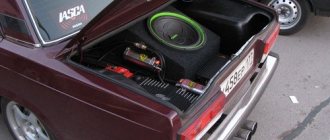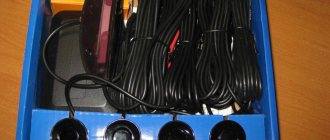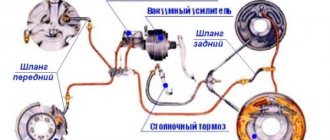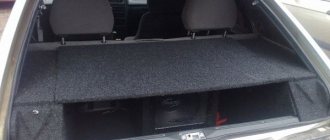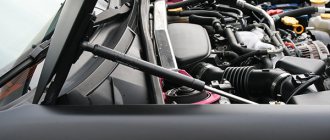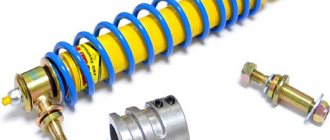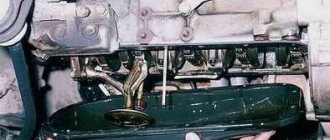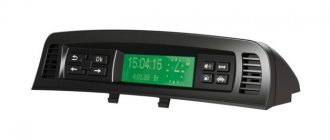Which sealant is best for a car engine?
Automotive sealant for an internal combustion engine is a means for maintenance and repair of one of the main technical components in the car. It is an alternative to conventional rubber gaskets, an easy to use and effective one- or multi-component composition for eliminating leaks. It has increased viscosity, ductility and resistance to high temperature loads. It is made on the basis of various chemicals.
Purpose of sealant
Sealant for the engine oil pan is a special composition to prevent lubricant leaks, a paste or gel-like mass with a high viscosity index that can fill cracks. This product extends the life of gaskets or allows you to replace elastic elements, stops leaks through the valve cover holes, and eliminates leaks in the radiator and other parts of the engine oil system.
Anaerobic
Anaerobic engine sealant belongs to the group of acrylic adhesives. Resistant to vibration loads, temperature fluctuations and pressure changes, resistant to aggressive chemical components. The sealant prevents the formation of corrosion and stops the oxidation process. It contains the following components: acrylic oligomers, thickeners, inhibitors, etc.
The material hardens when interacting with metal in places (gaps and cracks) where oxygen does not enter. In order for the anaerobic auto sealant to polymerize, the parts must be tightly connected.
This property is an advantage of the sealing composition, since it gives a large amount of time to work. The driver or technical center specialist can carry out repair work carefully and without haste, without worrying about the rapid hardening of the material. The average setting time is 20-30 minutes.
Anaerobic sealant has disadvantages. This chemical is not suitable for creating a thick seal layer or filling large gaps and cracks.
Silicone
Silicone automotive sealants are highly elastic and durable, heat-resistant, and have a long service life. Suitable for minor repairs and solving more serious problems. They consist of a polymer base, a vulcanizer, a plasticizer, a filler to add volume and color, a coupling agent and an amplifier.
The buyer can choose silicone auto sealant for non-professional use. Sealing materials are available for sale, differing in the temperature conditions of use and the elasticity of the resulting layer. For example, you can choose a product that can withstand the increased pressure in boosted turbocharged power units.
Polymerization of a silicone-based chemical is carried out due to the moisture contained in the air. The total setting time is 8-10 minutes. Silicone sealant dries quickly compared to anaerobic sealant. However, this time is enough to repair engine parts, apply lubricant to the valve cover and other elements.
For the use of silicone sealing material to be effective, it is necessary to clean the metal surface from contamination. Then degrease and dry. Only then is oil system sealant applied, which plays the role of a seal and seals off fluid leaks.
For urgent repairs
This engine sump sealant is not directly related to anaerobic-type auto chemicals and silicone-based compounds. It is needed as a temporary remedy for emergency situations. It is poured into the lubrication or cooling system when there is a leak, but there is no way to determine the cause of the problem and quickly eliminate it. Works like liquid gasket for cars. After use, it stops the loss of technical fluid, allowing you to get to the garage or repair shop.
This product is made on the basis of synthetic resins. Has a wide range of applications. It is characterized by high elasticity and increased resistance to ultraviolet radiation, mechanical damage and humidity.
However, repair sealant is rarely used by drivers when sealing the cylinder head gasket and the oil pan of the power unit. The main reason is the lower efficiency of most products compared to narrow-profile anaerobic and silicone compounds.
About acid and neutral sealants
Silicone sealant for cylinder head gaskets and engine oil pan, depending on the chemical composition, can be acidic or neutral. The first one releases acetic acid during polymerization and has a strong smell, the second one releases ketoxime or alcohol (no smell). Acidic sealants are aggressive towards non-ferrous metals. Therefore, they are practically not used in modern foreign cars.
Neutral silicone sealant is less aggressive and has a wider range of applications. At the same time, it has increased adhesion to other materials, resistance to water and UV rays.
Second partial replacement of ATF fluid in automatic transmission — Mazda CX-5, 2.5 l., 2013 on DRIVE2
In the month of August at a mileage of 88,000 km. I did a second partial oil change in the automatic transmission with a filter replacement. I chose the original oil. There were no prerequisites for replacement; I changed it as a preventive measure.
Full size
Start
A week before changing the oil in the automatic transmission, I installed two neodymium magnets on the pan in its very bottom part. The replacement process is not difficult. The most labor-intensive process is stripping the pan of old sealant.
Full size
At the bottom of the photo you can see the outline of the magnets, outlined by metal dust contained in the oil.
Despite the fact that the magnet inside the pan is not very dirty, there are smaller metal particles in the oil. The old filter appeared to be in good condition, but was nevertheless replaced.
Full size
Automatic transmission without pan.
After cleaning the pan and automatic transmission unit from the old sealant, the places where the new sealant was applied were degreased with alcohol.
Full size
The pan is ready for sealant application
Full size
Sealant for automatic transmission pan
After applying the sealant, I waited about 10 minutes and began installing the pan. The pallet was pulled in several approaches at intervals of 25-30 minutes. Between broaches I replaced the brake fluid.
Full size
Brake fluid
2 hours after the start of installing the pan, I filled in ATF fluid and then adjusted the level. In total it took 4.5 liters. After the replacement I drove about 10,000 km, everything is fine. By the way, I decided to leave the magnets on the pallet, there is no harm, but the benefits are obvious.
www.drive2.ru
Sealant packaging
Engine sealant is sold in the form of gels and pastes. Many manufacturers produce the product in small plastic or aluminum tubes (up to 100 g) with dispenser caps. This makes it easier to apply sealing material to the oil pan. It is more profitable to take in a small package, since the material will be used up faster and will not have time to dry.
Automotive sealants for professional use are supplied in large tubes. It is more profitable to take such packaging for car services, technical centers and repair shops, where a lot of sealing material is required. Most of them are applied using a syringe gun.
The best sealants for motors
Henkel Loctite 574
This inexpensive engine flange sealant is anaerobic. Has a medium degree of strength. Polymerization occurs between gap-free metal surfaces in the absence of air. Operating temperature range – from -55 to +150 degrees.
Loctite 574 has an optimized chemical composition suitable for sealing rigid flange connections, including engine castings. The maximum fillable gap between the flanges is 0.25 mm.
Forch K161
Motor-hull sealing material. Does not contain silicone. It is an anaerobic product that performs well in sealing flanges and surfaces with small gaps and fluid passages.
Forch K161 is an oil resistant sealant that replaces standard rigid gaskets as it is durable and wear resistant once applied.
Permatex Ultra Black Maximum
This silicone-based sealant seals when exposed to moisture in the air. Forms a dense and elastic gasket of black color with a metallic sheen from silicone rubber, which is superior in properties to a conventional sealing element.
The product has a wide temperature range (from -54 to +260 degrees). Does not crack, shrink or become too hard even after prolonged use. Has increased resistance to oils.
Permatex brand synthetic sealing compound fills gaps up to 6mm.
Hi-Gear
Repair sealant that eliminates damage to the power unit cooling system. It contains ceramic fibers to strengthen the repaired area. Hi-Gear brand auto sealant successfully copes with large cracks and is suitable for repairing cylinder blocks, heavily worn head gaskets, radiators made of copper, aluminum or composite material.
Means 9043 does not interfere with the circulation of coolant in the system, ensuring full functionality of the vehicle.
see also
Comments 28
I glued it to red ABRO. Doesn't flow.
My red abro started flowing instantly(
They pulled it over my ass and it started to flow
It was pulled through the reproductive organ.
Viktor Reintz, we can leave in a couple of hours.
I bought a gray abro. Then an acquaintance suggested me Viktor Reintz. I thought it would be better. I filled in the oil about 2 hours later, I didn’t rush it. As a result, the oil is leaking somewhere from the connection. Idk now. It hurts a lot to disassemble to remove the pallet, so I would re-glue it again
I used practically the cheapest temperature sealant and filled in the oil after about 30 minutes. So much time had passed that I had already changed the oil. The flight is excellent, not a hint of leakage. The main thing is not to overdo it with sealant
We always use gray abro.
Only I usually first tighten the bolts by hand, and after about an hour I tighten them more tightly.
Hello! I climbed into the pit with a friend and thought about sealing the pallet, but it was already too late because they didn’t. There, even during the hike you need to remove either the exhaust pipe from the pants + the ski. Or stabilizer + ski. Well, accordingly, the engine mount will go away. The question is, if I remove the ski with the cushion, the engine will sag a little. Right?
You need to remove the ski and exhaust
Hello! I climbed into the pit with a friend and thought about sealing the pallet, but it was already too late because they didn’t. There, even during the hike you need to remove either the exhaust pipe from the pants + the ski. Or stabilizer + ski. Well, accordingly, the engine mount will go away. The question is, if I remove the ski with the cushion, the engine will sag a little. Right?
Nothing will happen to the pillow. Feel free to take it off. Unscrew the cushions from the ski, not from the engine.
METHOD OF APPLICATION: 1. Remove fragments of the old gasket and thoroughly clean the surface. 2. Remove the cap, pierce the protective foil and screw on the supplied nozzle. Cut the tip of the nozzle to create a hole of the required size. 3. Apply along the perimeter to the entire mating surface (preferably only to the cover itself), forming a layer 2-3 mm thick. Leave holes for the mounting bolts. 4. Allow to dry for 10 minutes before assembly. Then press both parts to be glued together by tightening the fastening bolts. The gluing time of metal parts is 1 hour. Complete drying of the formed gasket occurs within 24 hours. NOT RECOMMENDED FOR USE ON CYLINDER HEAD GASKETS.
about abro. in theory it’s normal... the last line killed me)
Yeah, I already read it))
METHOD OF APPLICATION: 1. Remove fragments of the old gasket and thoroughly clean the surface. 2. Remove the cap, pierce the protective foil and screw on the supplied nozzle. Cut the tip of the nozzle to create a hole of the required size. 3. Apply along the perimeter to the entire mating surface (preferably only to the cover itself), forming a layer 2-3 mm thick. Leave holes for the mounting bolts. 4. Allow to dry for 10 minutes before assembly. Then press both parts to be glued together by tightening the fastening bolts. The gluing time of metal parts is 1 hour. Complete drying of the formed gasket occurs within 24 hours. NOT RECOMMENDED FOR USE ON CYLINDER HEAD GASKETS.
about abro. in theory it’s normal... the last line killed me)
Last line...

